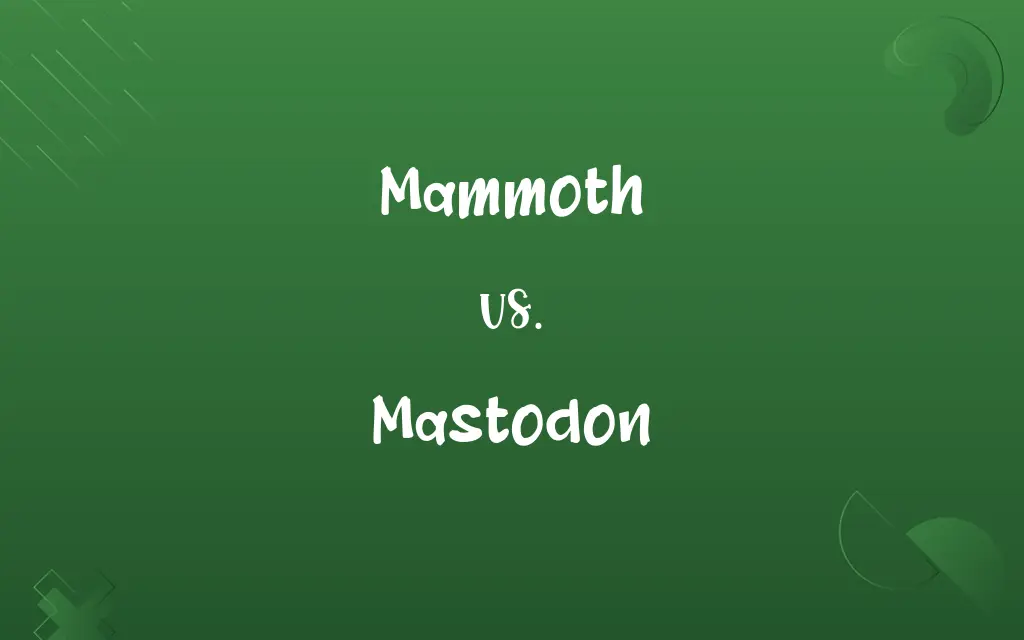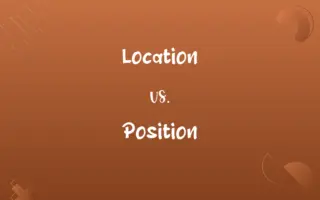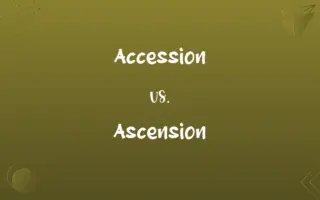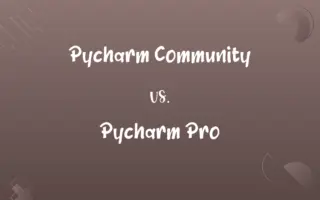Mammoth vs. Mastodon: Know the Difference

By Shumaila Saeed || Updated on December 26, 2023
Mammoths were large, hairy prehistoric elephants with curved tusks, while mastodons, also prehistoric, were stockier with straighter tusks and distinct cusp-patterned teeth.

Key Differences
Mammoths were known for their long, curved tusks and thick, shaggy hair, adapted to cold climates. Mastodons, although similar in size, had straighter tusks and a more rugged build, with distinctively different molar teeth suitable for chewing coarse vegetation.
Shumaila Saeed
Dec 26, 2023
Mammoths roamed across a wide range of territories, including North America, Europe, and Asia, often in cold, glacial environments. Mastodons primarily lived in North and Central America, in forested and swampy habitats, indicating different ecological preferences.
Shumaila Saeed
Dec 26, 2023
Mammoths belong to the genus Mammuthus and were closely related to modern elephants. Mastodons, from the genus Mammut, branched off earlier from the elephant lineage, having a more primitive anatomy in some aspects.
Shumaila Saeed
Dec 26, 2023
The diet of mammoths primarily consisted of grasses and herbaceous plants, reflecting their adaptation to steppe and tundra environments. Mastodons had a diet more focused on browsing, consuming leaves, twigs, and branches, suited to their forest habitats.
Shumaila Saeed
Dec 26, 2023
Mammoths became extinct around 4,000 years ago, with some isolated populations surviving until then. Mastodons became extinct earlier, about 10,000 to 11,000 years ago, with their fossil record revealing insights into their habitat and lifestyle.
Shumaila Saeed
Dec 26, 2023
ADVERTISEMENT
Comparison Chart
Evolutionary Relation
Close to modern elephants
More distant from modern elephants
Shumaila Saeed
Dec 26, 2023
ADVERTISEMENT
Mammoth and Mastodon Definitions
Mammoth
Extinct species with curved tusks.
Mammoth fossils are often found in Siberia.
Shumaila Saeed
Dec 26, 2023
Mastodon
An ancient elephant-like creature with straight tusks.
Mastodons once thrived in North America's forests.
Shumaila Saeed
Dec 26, 2023
Mammoth
A relative of modern elephants.
Mammoths and modern elephants share common ancestors.
Shumaila Saeed
Dec 26, 2023
Mastodon
Extinct animal similar to but distinct from mammoths.
Unlike mammoths, mastodons had less curved tusks.
Shumaila Saeed
Dec 26, 2023
Mammoth
Known for their massive size and fur.
The mammoth's fur helped it survive in freezing temperatures.
Shumaila Saeed
Dec 26, 2023
ADVERTISEMENT
Mastodon
Became extinct around 11,000 years ago.
The mastodon vanished at the end of the last Ice Age.
Shumaila Saeed
Dec 26, 2023
Mammoth
Ice Age mammal adapted to cold climates.
Woolly mammoths were well adapted to the glacial environment.
Shumaila Saeed
Dec 26, 2023
Mastodon
Lived in wooded areas during the Pleistocene.
Mastodons were common in what is now the United States.
Shumaila Saeed
Dec 26, 2023
Mammoth
A large, hairy, prehistoric elephant.
The mammoth roamed the Earth during the Ice Age.
Shumaila Saeed
Dec 26, 2023
Mastodon
Prehistoric mammal with cusp-patterned teeth.
Mastodon molars were designed to grind leaves and branches.
Shumaila Saeed
Dec 26, 2023
Mammoth
Any of various extinct elephants of the genus Mammuthus of the Pliocene, Pleistocene, and Holocene Epochs, having ridged molars and often, as in the woolly mammoth, long tusks and hair.
Shumaila Saeed
Oct 19, 2023
Mastodon
Any of several very large, extinct proboscidian mammals of the family Mammutidae of the Miocene, Pliocene, and Pleistocene Epochs, resembling elephants but having molar teeth of a different structure.
Shumaila Saeed
Oct 19, 2023
Mastodon
Extinct elephant-like mammal of the genus †Mammut that flourished worldwide from Miocene through Pleistocene times; differs from elephants and mammoths in the form of the molar teeth.
Shumaila Saeed
Oct 19, 2023
Mastodon
An extinct genus of mammals closely allied to the elephant, but having less complex molar teeth, and often a pair of lower, as well as upper, tusks, which are incisor teeth. The species were mostly larger than elephants, and their remains occur in nearly all parts of the world in deposits ranging from Miocene to late Quaternary time.
Shumaila Saeed
Oct 19, 2023
Mammoth
Any species of the extinct genus Mammuthus, of large, usually hairy, elephant-like mammals with long curved tusks and an inclined back, which became extinct with the last retreat of ice age glaciers during the late Pleistocene period, and are known from fossils, frozen carcasses, and Paleolithic cave paintings found in North America and Eurasia.
Shumaila Saeed
Oct 19, 2023
Mastodon
Extinct elephant-like mammal that flourished worldwide from Miocene through Pleistocene times; differ from mammoths in the form of the molar teeth
Shumaila Saeed
Oct 19, 2023
Mammoth
An extinct, hairy, maned elephant (Mammuthus primigenius formerly Elephas primigenius), of enormous size, remains of which are found in the northern parts of both continents. The last of the race, in Europe, were coeval with prehistoric man.
Shumaila Saeed
Oct 19, 2023
Mammoth
Resembling the mammoth in size; very large; gigantic; as, a mammoth ox.
Shumaila Saeed
Oct 19, 2023
Mammoth
Any of numerous extinct elephants widely distributed in the Pleistocene; extremely large with hairy coats and long upcurved tusks
Shumaila Saeed
Oct 19, 2023
Mammoth
So exceedingly large or extensive as to suggest a giant or mammoth;
A gigantic redwood
Gigantic disappointment
A mammoth ship
A mammoth multinational corporation
Shumaila Saeed
Oct 19, 2023
Repeatedly Asked Queries
Are there any living descendants of mammoths?
No, mammoths have no direct living descendants.
Shumaila Saeed
Dec 26, 2023
Were mammoths woolly?
Yes, especially the woolly mammoth, adapted to the Ice Age.
Shumaila Saeed
Dec 26, 2023
Were mammoths bigger than mastodons?
Generally, mammoths were larger and taller.
Shumaila Saeed
Dec 26, 2023
Why did mammoths become extinct?
Likely due to climate change and human hunting.
Shumaila Saeed
Dec 26, 2023
Were mastodons as hairy as mammoths?
They had hair, but not as much as woolly mammoths.
Shumaila Saeed
Dec 26, 2023
Can mammoth DNA be used for cloning?
It's a topic of scientific research but not yet realized.
Shumaila Saeed
Dec 26, 2023
Were mastodons found worldwide?
No, they were primarily in North and Central America.
Shumaila Saeed
Dec 26, 2023
Did mammoths and mastodons coexist?
Yes, their timelines overlapped for thousands of years.
Shumaila Saeed
Dec 26, 2023
Was the mammoth's fur its key survival feature?
Yes, it helped them survive the harsh Ice Age winters.
Shumaila Saeed
Dec 26, 2023
Why are mastodon fossils important?
They provide insights into prehistoric ecosystems.
Shumaila Saeed
Dec 26, 2023
How are mammoths different from elephants?
Mammoths were larger, hairier, and adapted to colder climates.
Shumaila Saeed
Dec 26, 2023
What's the main difference in their teeth?
Mastodons had cusp-patterned teeth for browsing, while mammoths had ridged molars for grazing.
Shumaila Saeed
Dec 26, 2023
What is the most famous type of mammoth?
The woolly mammoth is the most well-known.
Shumaila Saeed
Dec 26, 2023
Did mastodons have long tusks?
Their tusks were straighter and not as long as mammoths'.
Shumaila Saeed
Dec 26, 2023
Did mastodons live in herds?
Yes, like modern elephants, they likely lived in groups.
Shumaila Saeed
Dec 26, 2023
Are mammoth fossils common?
They are relatively common, especially in areas like Siberia.
Shumaila Saeed
Dec 26, 2023
Share this page
Link for your blog / website
HTML
Link to share via messenger
About Author
Written by
Shumaila SaeedShumaila Saeed, an expert content creator with 6 years of experience, specializes in distilling complex topics into easily digestible comparisons, shining a light on the nuances that both inform and educate readers with clarity and accuracy.









































































